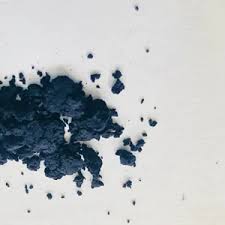natural dye indigo product
The Rich World of Natural Indigo Dye
Indigo, a deep blue dye derived from the leaves of the indigo plant, has captivated cultures for centuries. Renowned for its vibrant hue and versatility, natural indigo dye has become increasingly popular as consumers shift towards sustainable and eco-friendly materials. This article explores the historical significance, production processes, applications, and the environmental implications of using natural indigo dye products.
The Rich World of Natural Indigo Dye
The production of natural indigo dye involves a complex fermentation process. The leaves of the indigo plant, primarily from the species *Indigofera tinctoria*, are harvested and soaked in water. This soaking initiates fermentation, breaking down the glycosides present in the leaves to release the indigo compound. The resulting liquid is then oxidized, leading to the formation of the blue dye, which can be extracted, dried, and processed into powder or paste for use. This traditional method not only preserves the natural essence of the dye but also reflects a deep knowledge of botany and chemistry passed down through generations.
natural dye indigo product

Today, natural indigo dye is not just a pigment; it has seen a resurgence in the textile industry, especially among artisans and sustainable fashion brands. Unlike synthetic dyes, which often contain toxic chemicals, natural indigo is biodegradable and less harmful to the environment. Its application is diverse, ranging from denim production to handwoven fabrics, offering a sustainable alternative for fashion-conscious consumers. The deep blue color transforms textiles into unique pieces of art, each telling a story of its origins.
Moreover, the environmental implications of using natural indigo over synthetic dyes are significant. The production of synthetic dyes is notorious for its pollution, with wastewater containing hazardous substances that can contaminate water sources. In contrast, natural indigo production is more eco-friendly, employing traditional methods that have minimal impact on the environment. Additionally, many indigo farms promote biodiversity and support local economies, making natural indigo a choice that contributes positively to both ecology and community.
As awareness of sustainability grows, the demand for natural indigo dye products is on the rise. Brands are increasingly incorporating this natural dye into their collections, offering consumers the opportunity to enjoy vibrant, sustainable fashion. From handmade garments to artisanal accessories, natural indigo serves as a reminder of the beauty and richness of nature.
In conclusion, natural indigo dye is more than just a colorant; it is a bridge between history and modern sustainable practices. As we embrace these eco-friendly alternatives, we not only enrich our lives with beautiful products but also contribute to a more sustainable future. Exploring the world of natural indigo opens doors to creativity and responsibility, ensuring that this ancient dye continues to thrive for generations to come.
-
The Timeless Art of Denim Indigo Dye
NewsJul.01,2025
-
The Rise of Sulfur Dyed Denim
NewsJul.01,2025
-
The Rich Revival of the Best Indigo Dye
NewsJul.01,2025
-
The Enduring Strength of Sulphur Black
NewsJul.01,2025
-
The Ancient Art of Chinese Indigo Dye
NewsJul.01,2025
-
Industry Power of Indigo
NewsJul.01,2025
-
Black Sulfur is Leading the Next Wave
NewsJul.01,2025

Sulphur Black
1.Name: sulphur black; Sulfur Black; Sulphur Black 1;
2.Structure formula:
3.Molecule formula: C6H4N2O5
4.CAS No.: 1326-82-5
5.HS code: 32041911
6.Product specification:Appearance:black phosphorus flakes; black liquid

Bromo Indigo; Vat Bromo-Indigo; C.I.Vat Blue 5
1.Name: Bromo indigo; Vat bromo-indigo; C.I.Vat blue 5;
2.Structure formula:
3.Molecule formula: C16H6Br4N2O2
4.CAS No.: 2475-31-2
5.HS code: 3204151000 6.Major usage and instruction: Be mainly used to dye cotton fabrics.

Indigo Blue Vat Blue
1.Name: indigo blue,vat blue 1,
2.Structure formula:
3.Molecule formula: C16H10N2O2
4.. CAS No.: 482-89-3
5.Molecule weight: 262.62
6.HS code: 3204151000
7.Major usage and instruction: Be mainly used to dye cotton fabrics.

